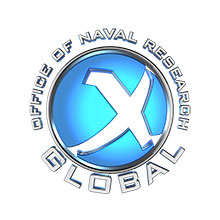
The Office of Naval Research (ONR) chose four winning projects totaling $1.1 million in awards for its Global-X international science challenge to encourage new research, the office said Sept. 23. ONR Global first launched Global-X in April as an effort to competitively select and fund “revolutionary international research projects” in basic research while fostering international science community relationships (Defense Daily, April 23). The challenge focused on three areas: tailored material and manufacturing; multifunctional maritime films for persistent and survivable platforms…

 By
By 











